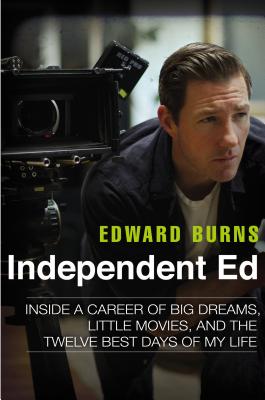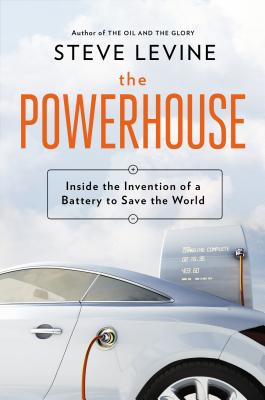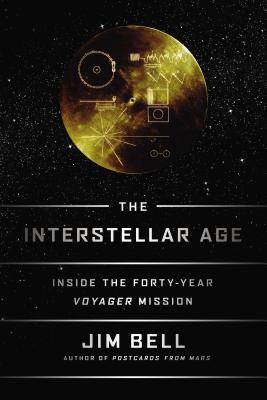In February 2011, John Galliano, the lauded head of Christian Dior, imploded with a drunken, anti-Semitic public tirade. Exactly a year earlier, celebrated designer Alexander McQueen took his own life three weeks before his women’s wear show. Both were casualties of the war between art and commerce that has raged within fashion for the last two decades.
In the mid-1990s, Galliano and McQueen arrived on the fashion scene when the business was in an artistic and economic rut. They shook the establishment out of its bourgeois, minimalist stupor with daring, sexy designs and theatrical fashion shows.
They had similar backgrounds: sensitive, shy gay men raised in tough London neighborhoods, their love of fashion nurtured by their doting mothers. By 1997, each had landed a job as creative director for couture houses owned by French tycoon Bernard Arnault, chairman of LVMH.
Galliano’s and McQueen’s work not only influenced fashion; their distinct styles were reflected across the media landscape. With their help, luxury fashion evolved from a clutch of small, family-owned businesses into a $280 billion-a-year global corporate industry. Executives pushed the designers to meet increasingly rapid deadlines. For both Galliano and McQueen, the pace was unsustainable.
The same week that Galliano was fired, Forbes named Arnault the fourth richest man in the world. Two months later, in the wake of McQueen’s death, Kate Middleton wore a McQueen wedding gown, instantly making the house the world’s most famous fashion brand, and the Metropolitan Museum of Art opened a wildly successful McQueen retrospective, cosponsored by the corporate owners of the McQueen brand. The corporations had won and the artists had lost.
In her groundbreaking work, Gods and Kings, acclaimed journalist Dana Thomas tells the true story of McQueen and Galliano. In so doing, she reveals the relentless world of couture—and the price it demanded of the very ones who saved it.
In the mid-1990s, Galliano and McQueen arrived on the fashion scene when the business was in an artistic and economic rut. They shook the establishment out of its bourgeois, minimalist stupor with daring, sexy designs and theatrical fashion shows.
They had similar backgrounds: sensitive, shy gay men raised in tough London neighborhoods, their love of fashion nurtured by their doting mothers. By 1997, each had landed a job as creative director for couture houses owned by French tycoon Bernard Arnault, chairman of LVMH.
Galliano’s and McQueen’s work not only influenced fashion; their distinct styles were reflected across the media landscape. With their help, luxury fashion evolved from a clutch of small, family-owned businesses into a $280 billion-a-year global corporate industry. Executives pushed the designers to meet increasingly rapid deadlines. For both Galliano and McQueen, the pace was unsustainable.
The same week that Galliano was fired, Forbes named Arnault the fourth richest man in the world. Two months later, in the wake of McQueen’s death, Kate Middleton wore a McQueen wedding gown, instantly making the house the world’s most famous fashion brand, and the Metropolitan Museum of Art opened a wildly successful McQueen retrospective, cosponsored by the corporate owners of the McQueen brand. The corporations had won and the artists had lost.
In her groundbreaking work, Gods and Kings, acclaimed journalist Dana Thomas tells the true story of McQueen and Galliano. In so doing, she reveals the relentless world of couture—and the price it demanded of the very ones who saved it.
An entertaining and inspirational memoir by one of the most prominent practitioners and evangelists of independent filmmaking, and the acclaimed writer, director, and actor ("Saving Private Ryan", "Friends with Kids", "Entourage") whose first film—"The Brothers McMullen"—has become an indie classic.
At the age of twenty-five, Ed Burns directed and produced his first film on a tiny $25,000 budget. The Brothers McMullen went on to win the Grand Jury Prize at the Sundance Film Festival in 1995, and established the working-class Irish American filmmaker as a talent to watch. In the twenty years since, Burns has made ten more films ("She’s the One", "Sidewalks of New York", and "The Fitzgerald Family Christmas"), while also acting in big budget Hollywood movies ("Saving Private Ryan"), hit television shows ("Entourage" and "Mob City"), and pioneering a new distribution network for indie filmmakers online and with TV’s On Demand service (“why open a film in twenty art houses when you can open in twenty million homes?”).
Inspired by Burns’s uncompromising success both behind and in front of the camera, students and aspiring filmmakers are always asking Burns for advice. In Independent Ed, Burns shares the story of his two remarkable decades in a fickle business where heat and box office receipts are often all that matter. He recounts stories of the lengths he has gone to to secure financing for his films, starting with "The Brothers McMullen" (he told his father: “Shooting was the twelve best days of my life”). How he found stars on their way up—including Jennifer Aniston and Cameron Diaz—to work in his films, and how he’s adhered religiously to the dictum of writing what you know, working as if he was just starting out, and always “looking for the next twelve best days of my life.”
Chronicling the struggles and the long hours as well as the heady moments when months of planning and writing come to fruition, Independent Ed is a must-read for movie fans, film students, and everyone who loves a gripping tale about what it takes to forge your own path in work and life.
At the age of twenty-five, Ed Burns directed and produced his first film on a tiny $25,000 budget. The Brothers McMullen went on to win the Grand Jury Prize at the Sundance Film Festival in 1995, and established the working-class Irish American filmmaker as a talent to watch. In the twenty years since, Burns has made ten more films ("She’s the One", "Sidewalks of New York", and "The Fitzgerald Family Christmas"), while also acting in big budget Hollywood movies ("Saving Private Ryan"), hit television shows ("Entourage" and "Mob City"), and pioneering a new distribution network for indie filmmakers online and with TV’s On Demand service (“why open a film in twenty art houses when you can open in twenty million homes?”).
Inspired by Burns’s uncompromising success both behind and in front of the camera, students and aspiring filmmakers are always asking Burns for advice. In Independent Ed, Burns shares the story of his two remarkable decades in a fickle business where heat and box office receipts are often all that matter. He recounts stories of the lengths he has gone to to secure financing for his films, starting with "The Brothers McMullen" (he told his father: “Shooting was the twelve best days of my life”). How he found stars on their way up—including Jennifer Aniston and Cameron Diaz—to work in his films, and how he’s adhered religiously to the dictum of writing what you know, working as if he was just starting out, and always “looking for the next twelve best days of my life.”
Chronicling the struggles and the long hours as well as the heady moments when months of planning and writing come to fruition, Independent Ed is a must-read for movie fans, film students, and everyone who loves a gripping tale about what it takes to forge your own path in work and life.
A Soul of the New Machine for our time, a gripping account of invention, commerce, and duplicity in the age of technology
A worldwide race is on to perfect the next engine of economic growth, the advanced lithium-ion battery. It will power the electric car, relieve global warming, and catapult the winner into a new era of economic and political mastery. Can the United States win?
Steve LeVine was granted unprecedented access to a secret federal laboratory outside Chicago, where a group of geniuses is trying to solve this next monumental task of physics. But these scientists— almost all foreign born—are not alone. With so much at stake, researchers in Japan, South Korea, and China are in the same pursuit. The drama intensifies when a Silicon Valley start-up licenses the federal laboratory’s signature invention with the aim of a blockbuster sale to the world’s biggest carmakers.
The Powerhouse is a real-time, two year thrilling account of big invention, big commercialization, and big deception. It exposes the layers of competition and ambition, aspiration and disappointment behind this great turning point in the history of technology.
A worldwide race is on to perfect the next engine of economic growth, the advanced lithium-ion battery. It will power the electric car, relieve global warming, and catapult the winner into a new era of economic and political mastery. Can the United States win?
Steve LeVine was granted unprecedented access to a secret federal laboratory outside Chicago, where a group of geniuses is trying to solve this next monumental task of physics. But these scientists— almost all foreign born—are not alone. With so much at stake, researchers in Japan, South Korea, and China are in the same pursuit. The drama intensifies when a Silicon Valley start-up licenses the federal laboratory’s signature invention with the aim of a blockbuster sale to the world’s biggest carmakers.
The Powerhouse is a real-time, two year thrilling account of big invention, big commercialization, and big deception. It exposes the layers of competition and ambition, aspiration and disappointment behind this great turning point in the history of technology.
The story of the men and women who drove the Voyager spacecraft mission— told by a scientist who was there from the beginning.
The Voyager spacecraft are our farthest-flung emissaries—11.3 billion miles away from the crew who built and still operate them, decades since their launch.
Voyager 1 left the solar system in 2012; its sister craft, Voyager 2, will do so in 2015. The fantastic journey began in 1977, before the first episode of Cosmos aired. The mission was planned as a grand tour beyond the moon; beyond Mars, Jupiter, and Saturn; and maybe even into interstellar space. The fact that it actually happened makes this humanity’s greatest space mission.
In The Interstellar Age, award-winning planetary scientist Jim Bell reveals what drove and continues to drive the members of this extraordinary team, including Ed Stone, Voyager’s chief scientist and the one-time head of NASA’s Jet Propulsion Lab; Charley Kohlhase, an orbital dynamics engineer who helped to design many of the critical slingshot maneuvers around planets that enabled the Voyagers to travel so far; and the geologist whose Earth-bound experience would prove of little help in interpreting the strange new landscapes revealed in the Voyagers’ astoundingly clear images of moons and planets.
Speeding through space at a mind-bending eleven miles a second, Voyager 1 is now beyond our solar system's planets. It carries with it artifacts of human civilization. By the time Voyager passes its first star in about 40,000 years, the gold record on the spacecraft, containing various music and images including Chuck Berry’s “Johnny B. Goode,” will still be playable.
The Voyager spacecraft are our farthest-flung emissaries—11.3 billion miles away from the crew who built and still operate them, decades since their launch.
Voyager 1 left the solar system in 2012; its sister craft, Voyager 2, will do so in 2015. The fantastic journey began in 1977, before the first episode of Cosmos aired. The mission was planned as a grand tour beyond the moon; beyond Mars, Jupiter, and Saturn; and maybe even into interstellar space. The fact that it actually happened makes this humanity’s greatest space mission.
In The Interstellar Age, award-winning planetary scientist Jim Bell reveals what drove and continues to drive the members of this extraordinary team, including Ed Stone, Voyager’s chief scientist and the one-time head of NASA’s Jet Propulsion Lab; Charley Kohlhase, an orbital dynamics engineer who helped to design many of the critical slingshot maneuvers around planets that enabled the Voyagers to travel so far; and the geologist whose Earth-bound experience would prove of little help in interpreting the strange new landscapes revealed in the Voyagers’ astoundingly clear images of moons and planets.
Speeding through space at a mind-bending eleven miles a second, Voyager 1 is now beyond our solar system's planets. It carries with it artifacts of human civilization. By the time Voyager passes its first star in about 40,000 years, the gold record on the spacecraft, containing various music and images including Chuck Berry’s “Johnny B. Goode,” will still be playable.
After nearly a lifetime spent in the Industry, author and fashion insider Simon Doonan is ready to let you in on a little secret: his peers in this multibillion-dollar industry are just as nutty as the denizens of your local loony bin. In The Asylum, an unabashedly hilarious collection of autobiographical essays, Doonan, the creative ambassador for Barneys New York, tells the real-life stories of glamorous madness and stylish insanity.
Doonan has witnessed models unable to work for fear of ghosts, gone deep-sea fishing with a couturier pal and his jailbird companion, and watched Anna Wintour remain perfectly calm while the ceiling fell—literally—in the middle of Fashion Week. Once you start looking, he says, you’ll notice telltale signs of lunacy everywhere. Style insiders see patterns and trends in everything; they suffer from outsize personality disorders and delusions of grandeur; and of course, they have a predilection for theatrical makeup and artfully destroyed clothing. No one is more suited to the asylum than the truly die-hard fashionista—after all, eccentricity and extremism are the foundations of great style.
With his gimlet eye for the absurd and a love for eccentricity, Doonan’s personal and professional stories never fail to entertain. “The David Sedaris of the style universe” (The Boston Globe) gives us the scoop on the kooky, cutthroat—but always fabulous—fashion world, and proves himself one of the sharpest humorists writing today.
Doonan has witnessed models unable to work for fear of ghosts, gone deep-sea fishing with a couturier pal and his jailbird companion, and watched Anna Wintour remain perfectly calm while the ceiling fell—literally—in the middle of Fashion Week. Once you start looking, he says, you’ll notice telltale signs of lunacy everywhere. Style insiders see patterns and trends in everything; they suffer from outsize personality disorders and delusions of grandeur; and of course, they have a predilection for theatrical makeup and artfully destroyed clothing. No one is more suited to the asylum than the truly die-hard fashionista—after all, eccentricity and extremism are the foundations of great style.
With his gimlet eye for the absurd and a love for eccentricity, Doonan’s personal and professional stories never fail to entertain. “The David Sedaris of the style universe” (The Boston Globe) gives us the scoop on the kooky, cutthroat—but always fabulous—fashion world, and proves himself one of the sharpest humorists writing today.
In shimmering prose that weaves among intimate confessions, deadpan asides, and piercing observations on the fear and turmoil that defined the long decade after 9/11, Clifford Chase tells the stories that have shaped his adulthood.
There are his aging parents, whose disagreements sharpen as their health declines; and his beloved brother, lost tragically to AIDS; and his long-term boyfriend--always present, but always kept at a distance.
There is also the revelatory, joyful music of the B-52s, Chase's sexual confusion in his twenties, and more recently, the mysterious appearance in his luggage of weird objects from Iran the year his mother died.
In the midst of all this is Chase's singular voice--incisive, wry, confiding, by turns cool or emotional, always engaging.
The way this book is written--in pitch-perfect fragments--is crucial to Chase's deeper message: that we experience and remember in short bursts of insight, terror, comedy, and love. As ambitious in its form as it is in its radical candor, The Tooth Fairy is the rare memoir that can truly claim to rethink the genre.






No comments:
Post a Comment